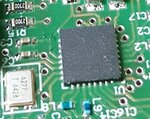T
treez
Guest
Hello,
We have had 1000 offline, DALI dimmable LED driver PCBs made up. We did not request for the PCB assembler to do any testing whatsoever of the finished PCBs.
We are finding that some of the PCBs work and dim according to the commands but some don’t. Some Dim according to the commands on the first power up, but then don’t on the second power up and not thereafter either.
We cannot actually check the DALI signal is actually getting to the microcontroller pin because the PIC18F26K20 pins are too small and hidden to get to the pin (28 QFN package)….so we have to go on the nearest 0402 resistor etc.
I am wondering if the PCBs have been badly assembled? Maybe they did not use the correct amount of paste on each of the circuit pads, and maybe the reflow baths weren’t hot enough? Maybe we have dry, intermittent joints all over the PCBs? –The fact that we didn’t ask the PCB assemblers to do any PCB testing for us meant that they had no way of knowing if they had set the reflow temperature correctly, no way of knowing if they had used the correct amount of paste for each pad etc.
Do you believe it is always essential to request that the PCB assemblers do PCB tests, if for no other reason than it shows them if their assembly process is good or not? After all, if they can’t test the PCBs , then how would they know that they are assembling them wrong.
Do you agree that PCB assembly is not an exact science, and that the Assemblers needs tests on the PCBs to tell them if their assembly process is right or wrong?
Not requesting the PCB assembler to do tests on finished PCBs is surely bad practice?
We have had 1000 offline, DALI dimmable LED driver PCBs made up. We did not request for the PCB assembler to do any testing whatsoever of the finished PCBs.
We are finding that some of the PCBs work and dim according to the commands but some don’t. Some Dim according to the commands on the first power up, but then don’t on the second power up and not thereafter either.
We cannot actually check the DALI signal is actually getting to the microcontroller pin because the PIC18F26K20 pins are too small and hidden to get to the pin (28 QFN package)….so we have to go on the nearest 0402 resistor etc.
I am wondering if the PCBs have been badly assembled? Maybe they did not use the correct amount of paste on each of the circuit pads, and maybe the reflow baths weren’t hot enough? Maybe we have dry, intermittent joints all over the PCBs? –The fact that we didn’t ask the PCB assemblers to do any PCB testing for us meant that they had no way of knowing if they had set the reflow temperature correctly, no way of knowing if they had used the correct amount of paste for each pad etc.
Do you believe it is always essential to request that the PCB assemblers do PCB tests, if for no other reason than it shows them if their assembly process is good or not? After all, if they can’t test the PCBs , then how would they know that they are assembling them wrong.
Do you agree that PCB assembly is not an exact science, and that the Assemblers needs tests on the PCBs to tell them if their assembly process is right or wrong?
Not requesting the PCB assembler to do tests on finished PCBs is surely bad practice?






